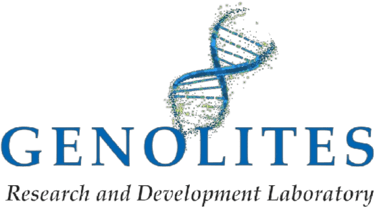Advanced Courses
Research, Review Paper & Thesis writing without Plagiarism
Blood pricking and Collection
Blood grouping
Complete blood analysis (diabetic profile, lipid profile, liver function test, kidney function test, electrolytes, haemogram, differential count, erythrocyte sedimentation rate)
Kit tests
Pathogen isolation and Identification
Antibiotics susceptibility test (ABST)
RT-PCR COVID Testing
Medical Laboratory Techniques
Food Technology
Analyzing physical, chemical and microbiological parameters of food
Identification of Adulterants
Development of new food products
Recent researches in food technology and preservation
Textile Technology
Extraction of natural fibres, dyes from various sources
Development of multifunctional smart textiles
Microencapsulation
Biological activities (Anti-bacterial, anti-fungal, anti-oxidant, anti-inflammatory, anti-cancer)
Colour fastness analysis (fastness to light, perspiration, acid, alkali)
Physical and mechanical properties of developed fabrics
Biocompatibility tests (HET-CAM and skin irritation)
Molecular Biology
DNA and plasmid extraction, Agarose gel electrophoresis (AGE)
Polymerase chain reaction (PCR)
Reverse transcription polymerase chain reaction (RT-PCR)
Protein extraction and estimation
Polyacrylamide gel electrophoresis (SDS-PAGE and Native PAGE)
Animal Cell Culture
Cell culture and maintenance
Cell counting
MTT assay for cell viability and toxicity
lactate dehydrogenase (LDH) assay
Extraction of proteins
Identification of protein expression by SDS-PAGE analysis
Bio-instrumentation (working Principle and Result Analysis)
UV-Vis spectroscopy
ELISA, Fourier transform infrared spectroscopy (FTIR)
X-ray diffraction (XRD)
High performance liquid chromatography (HPLC)
Liquid chromatography-Mass spectrometry (LCMS)
Gas chromatography-Mass spectrometry (GC-MS)
Scanning electron microscopy (SEM)
Transmission electron microscopy (TEM)
Confocal microscopy (2D & 3D)
Utilization of bio-instrumentation for advanced research
Nanotechnology
Green synthesis and Bio-synthesis of gold (Au), silver (Ag), copper (Cu), magnesium (Mg), zinc (Zn) and carbon (c) nanoparticles
Characterization of synthesized nanoparticles (UV-Vis, FTIR, DLS, Zeta, XRD, SEM, TEM)
Biological activities of the synthesized nanoparticles (Anti-microbial, anti-oxidant, anti-inflammatory, anti-diabetic and anti-cancer)
Toxicity analysis of the synthesized nanoparticles (Brine shrimp toxicity assay, RBC hemolysis)
Basics in Bioinformatics
Genomic sequencing (Sanger sequencing and next generation sequencing)
Analysis (BLAST, FASTA, Pairwise alignment, multiple sequence alignment)
Amino-acid sequencing and analysis
Insilico Drug Discovery
Protein and ligand databases
Preparation of Target proteins and ligands
Molecular docking using Autodock tools
Protein-ligand interactions
Molecular dynamics simulations
Peptide docking
Druglikeness analysis
ADME/Tox analysis
Bio-statistics
Calculating the Mean, standard deviation
Graphical representation of data
Analysis of variance (ANOVA)
Response surface methodology (RSM)
Correlation analysis
Phycology
Isolation, cultivation and maintenance of microalgae
Physiochemical parameters studies
Microalgal diversity analysis
Extraction of fattyacids and bioactive compounds
Biological activity (Anti-microbial, anti-oxidant, anti-inflammatory, anti- diabetic and anti-cancer) Toxicity analysis of the synthesized nanoparticles (Brines hrimp toxicity assay, RBC hemolysis)
Bio-fuel production
Phycoremediation
Forensic Technology
DNA fingerprinting - Restriction fragment length polymorphism (RFLP)
Detection of diatoms, Toxic compounds detection using LC-MS and GC-MS
DNA isolation from hair, nail, blood, tissue, buccal cavity
Cigarette amylase detection
Urine creatinine identification
Infection Models (non-ethical)
Development and treatment of microbial infections in Drosophilla melanogaster (fruit fly), Danio rerio (zebra fish) and Galleria mellonella (wax worm)
Survival studies
Microbial count and inhibition
Techniques in research, review paper writing
Representation of graphs and tables
Plagiarism and methods to reduce plagiarism
Referencing and formatting the manuscript
Screening and selection of journals
Techniques in thesis writing
DNA Cloning
Gene amplification
Vector designing
Restriction fragmentation
Ligation of two linear DNA fragments
Competant cell preparation
Transformation
Screening of right clone
Molecular Species Identification
DNA isolation
Primer designing
Polymerase Chain Reaction (PCR)
Sequencing
Species identification using NCBI
DNA Barcoding
Basics in DNA barcoding
Gene amplification
Sequencing of amplified gene
Generation of barcodes using BOLD database & other databases.
Techniques in Fluorescent Microscopy and Imaging
Principles of fluorescent microscope and dyes
Sample preparation and handling
Antimicrobial (Live/dead) staining
Biofilm inhibition assay
Toxicity of lead molecules on brine shrimps (In vivo)
Toxicity of lead molecules on nematodes (In vivo)
Imagining of fluorescent microalgae and other organisms
